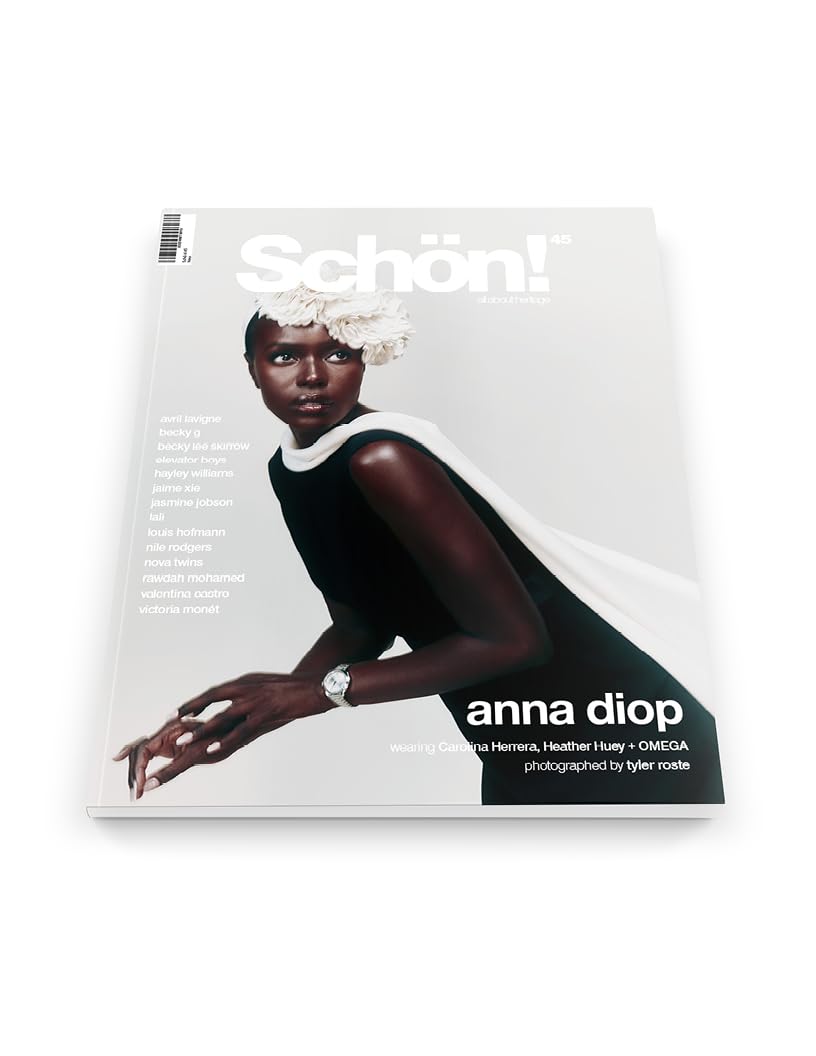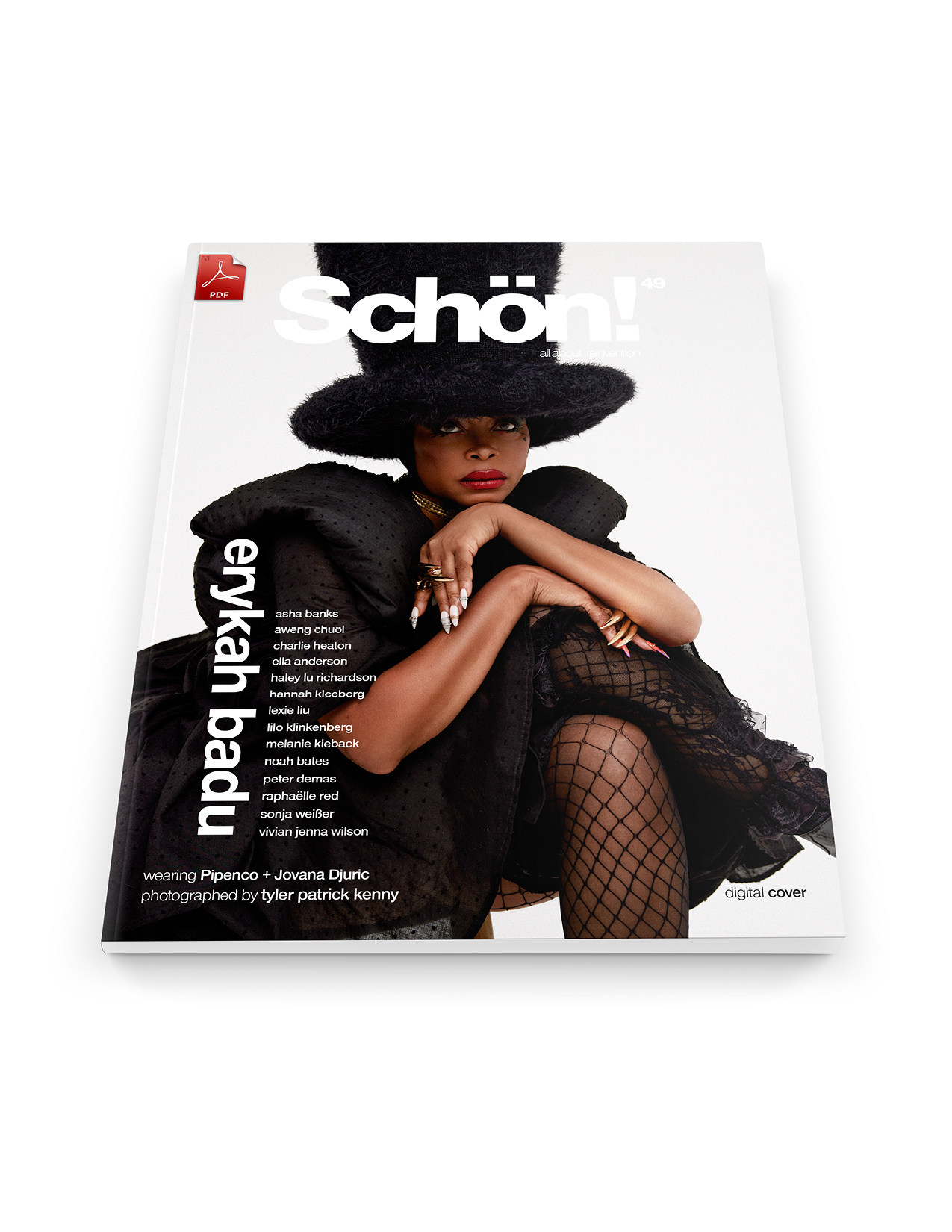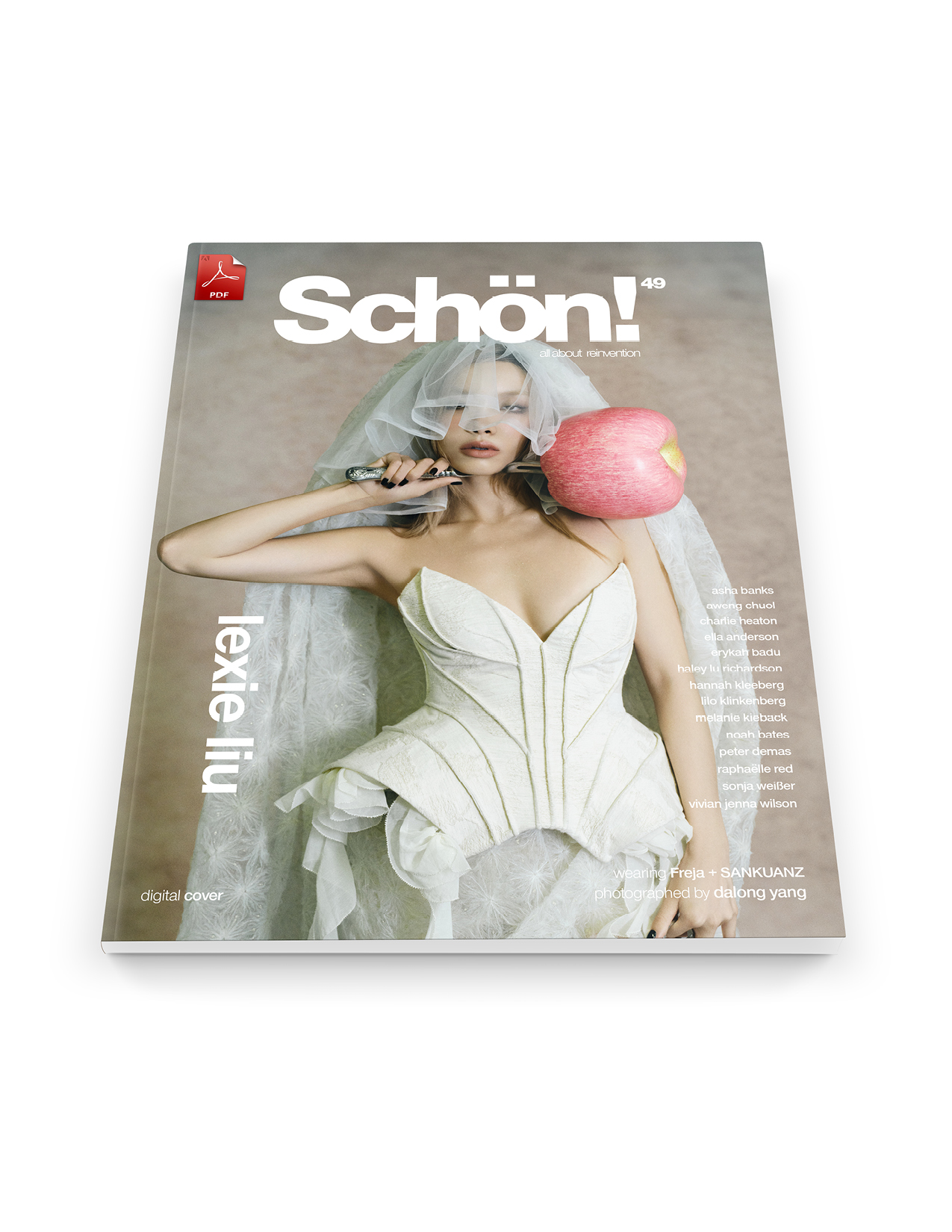As a multidisciplinary fashion designer, Camila Frater brings together a myriad of influences, aesthetics, and processes to create her unique bespoke designs. With an unconventional yet deft approach, Frater aims to create garments that showcase personal narratives and ensure that her designs embolden the wearer to show different facets of themselves. Since its fruition, Frater’s designs have been worn by the likes of Pinkpantheress and showcased at the most influential fashion spaces across New York City.
Schön! chats with Frater about her designs, the ethos behind her brand, and more.
What is the ethos behind your brand?
I have always pictured my brand’s ethos or essence to be this character of a girl or an attitude I see in the world inside my fashion illustrations that I don’t see in real life. It is supposed to represent someone who is dishevelled, hair in their face, with coffee stains, but at the same time entirely un-ordinary and bold. The best way I can try to explain my brand ethos is by representing quirk, curiosity, the child-like elements you see in kid’s picture books and darkness.
Your work touches on moments in time, particularly animated sequences. What is it about those that inspire your garments?
I try to bring in the inner world and visual language in my fashion illustrations as much as possible into my design work. In a lot of my illustrations, I focus on the movement being captured, especially in small moments. The narrative doesn’t necessarily need to be central to the actual design collection, but I found it important to focus on a sequence of a small moment in time, walking, hair blowing in the wind- something that seems in a way sort of mundane and ordinary, actually has very captivating feelings in an illustrative aspect. I find beauty and freedom in these moments, especially movement being captured in a repetitive cycle or sequence, capturing the daydream of a person’s world in these sequenced illustrative moments. How this concept inspires my garments is by capturing that same movement in my garments, and that is why in this collection, you can see those sculptural garment techniques used.
You are based in NYC and you grew up in Toronto. How did these two places influence you as a designer?
I think that NYC is definitely more of a vast location to locate different communities that share a designer/artist’s specific niches, subcultures, or nuances they are looking for. This majorly influenced me and still continually influences me as I meet so many different people who design and share a more unconventional approach to fashion design, not necessarily the traditional way, which I mesh well in. I think if you maneuver yourself in an angled way here, you are more likely to find yourself in opportunities that are fit for your specific needs as a designer.
Toronto is more tranquil, there are a lot of cool neighbourhoods and places rich with culture and history which I love and will always remember being young and growing up there. There are also extremely dull and repetitive areas that are mind-numbing to even stand in. I do think that parts of that have this quirkiness or enchantment that maybe only someone from there could see the value in. There is a scene for fashion, but very small and still growing. I think as well it may be harder to fit in or find your people. I always felt a bit out of place and felt like perhaps my work couldn’t grow in the way I knew it could there. Of course, all of this is just my speculation, but yes, I think anyone who wants to move to NYC for fashion-related opportunities may find themselves very positively influenced by the communities and possibilities here.
Are there specific artists or craftsmen that have influenced your work?
Yes absolutely. I’ve always admired the work of Hussein Chalayan, Manuel Vason and Marlene Dumas. All of these artists aren’t all designers, it is photographers and painters as well. I think that since I focus on fashion design, for me to try to constantly stay inspired and research my work, it is a good outlet to see how different artists who work in different mediums can inspire an aspect in your work. As for my favourite designer, I love the way Hussein Chalayan’s work is very minimal and sculptural. His work also engages in gender, religion and culture setting this sort of mood of suspense in his work which is very powerful. Marline Dumas and Manuel Vason both have work that is very experimental in concept and captures a lot of emotion through different lenses, I think that kind of work is super moving, and I wish to capture elements like that in my fashion illustrations, garments, and creative direction of the finished product.
Your work uses pattern-making by experimenting with folding and draping techniques to create something from 2D that becomes 3D. What was it like discovering this process and what’s the most difficult aspect of it?
The process of discovering this was much more of a challenge than actually physically making the collection. I was feeling very stuck at the beginning of developing this process because I was essentially making up a framework that was very specific to me and had to have a good sense of trust in the process. The patterns and silhouette of the dress were entirely depending on this idea of taking elements from a modular large-scale drawing and turning it into workable pattern pieces that can be sewn together and worn. It was difficult to follow through with the process because it wasn’t exactly based on traditional design developments I was familiar with previously, I was making it up as I went.
Discovering the versatility and power my drawing development had, and could be such a strong pathway to an opportunity of bridging the 2D to a 3D process was a great breakthrough that I had, I felt I could finally translate the silhouettes I was always envisioning for my work. The rest became more fluid and exploratory, as draping is something that generally comes more easily to me than other elements of the design process.
Folding and compartmentalizing my large-scale drawings were the central point that allowed me to drape in a concentrated way that essentially made up necessary rules in my draping process. Copying the shape of these drawings onto the toile, and also marking up where the fold lines and paper creases were, I started to drape the cutout fabric corresponding to the fold lines only. Each line was labelled in numerical/alphabetical formats, so when I would pin onto fold line A, cut into fold line B, and connect folding A to fold line C by hand sewing, for example. I would write it down in a formula setting- so every dress had instructions on how to drape it over and over. Finding a desired silhouette was also difficult, it sort of felt like the frustration of trying to finish a drawing, but keep erasing over and over because it still doesn’t feel right. Afterward, though, it was fulfilling to start putting everything together, making another set of patterns based on the drape.
Is there something you’ve done differently with your designs that has differed from previous garments?
Yes, I think my most recent collection truly plays with the process of how you can make a garment, not just the traditional A to Z.
As mentioned earlier, in this collection, I had a more multidisciplinary approach to designing garments, and through that- it opened up a lot of different creative opportunities. I think following through with a process like this just enforces the ideals of creativity and out-of-the-box thinking via designing. Surely, I can make a blouse without thinking and don’t always have to have a deep conceptual background in garment construction. I also like to focus on the promotional aspect of my work and be able to make more easily produced garments that are ideal for everyday wear. That being said, the other side of a simple blouse means I will want to overcomplicate the textile print for it as I develop my graphics via illustration. Making my textile placements for something like a typical t-shirt is always something much more fun to explore in my opinion, in a sense of trying to make an average silhouette more unique in any possible way.
Can you tell us about specific creative design approaches or aesthetics you wanted to explore when first designing the garments?
As these garments were inspired by a set of large-scale drawings, how I made these garments was constructed in this unconventional way. I was curious to capture sequenced drawings in a more animated form. I was thinking, why not make a flipbook? But even then, it was limiting because I’ve struggled to stay inside of a fixed sketchbook size- I always want to expand my drawing outside the page. I started to contextualize this idea, and quite literally tape it on another sheet of ripped tracing paper to continue the growth of this drawing, whatever the narrative may be. I worked tirelessly with drafting tape, and even hand-sewed pieces of the paper together.
So, in the end, this drawing wasn’t exactly your average drawing, it was more of a drawing with a textile approach. The drawing was folded and refolded, bordered with thick white medical tape, sewn together with red thread, and pencil smudged intentionally in certain areas- I started to become interested in these 2D aesthetics inside the drawing and wanted to somehow implement that into the garments. I think bridging something as 2D as my drawing into a 3D wearable dress, is such a difficult challenge because those two worlds differ from each other very much. This is something I am still exploring to this day, how to express that mysterious world inside my drawings onto a garment- I try to experiment with it every time I get the chance!
When you picture the ‘Camila Frater’ wearer, what do you envision them thinking or feeling while wearing your clothing?
I want them to feel like whatever they are wearing by me, it was made for them especially. I am just happy that people feel good about it and themselves! I sell my garments in two popular shops in the Lower East Side in NYC, called Lucky Jewel and Retail Pharmacy- and it’s been cool to see positive engagement with the people who purchase my pieces. Everything that is made is one of a kind and it is a piece of me. A lot of the graphics seen on the shirts come from this extensive archive of drawings I’ve made over the years, some of them are like- drawings I did when I was 15.
My style has completely changed over the years, and so have I. So when I see people wearing the clothes I make, it’s endearing that they are wearing this visual language I was trying to portray, even from long ago- I was always trying to create a visual language via illustration to communicate myself and be myself and it was the only way I could do so, so that is special to me. I want them to feel like that piece is just for them at that point in their life, made by different versions of myself.
Lastly, how do you see the ‘Camila Frater’ label growing and evolving in the future?
It’s so weird to picture where it can go because there are so many angles it can approach. I want to keep going in the way I am going, and sharing what I make with the public and to be worn. I want to ideally make a new collection in the next year- as it is a challenging process to develop it. I hope in that process, I discover new methods of making and take my graphic textile design to the next level. I want to collaborate with new designers, artists, and stylists too, I think that sharing ideas with people who have entirely their visions and worlds like mine, could be a cool way to grow my label too. We shall see! Hoping for the best.
Learn more about Camila Frater’s designs by checking out her Instagram.
photography. Maizy Shepherd + Amanda Morie
fashion, illustration + editing. Camila Frater
models. Milo O’connell + Audrey Hansen




































































































